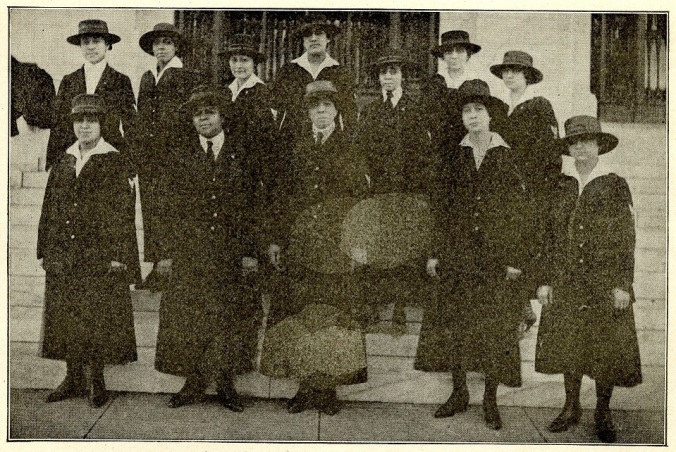By Martin Tuohy, National Museum of the American Sailor Archivist
Since America’s earliest decades, African American women lived and worked maritime lives. Today, the U.S. Navy reflects that truth; African American women are seasoned sailors. But who chose to be the Navy’s first African American women sailors, and why?
During the 1770s through the 1830s, the port cities of Baltimore, Philadelphia, and Charleston contained African American waterfront communities. Working within racial and gender boundaries, African American women sold provisions and sewed and mended sails and clothing. Many women married sea-going sailors, whose pay was notoriously low.
In 1863, U.S. Navy gunboat sailors of the Mississippi River Squadron found that captured Confederate naval and commercial steamboats included enslaved crews. After bringing the captured vessels to the U.S. naval base at Mound City, Illinois, the Navy listed African American maritime women of the crews among the contraband of war in federal court prize cases at Springfield, Illinois. Admiral David Porter authorized wage payments to the women, drawn from the sale of their former slaveholders’ vessels. No longer enslaved, but not yet free, many African American women stayed aboard as cooks, laundresses, and nurses once the steamers became U.S. Navy vessels.

Twelve of the first African American women in the Navy, on the steps of the Navy Department Building, Washington, D.C., about 1918. Kelly Miller’s Authentic History of the Negro in the World War for Human Rights.

Cover of the 1919 book that chronicled African-American patriotism and participation in World War I. National Museum of the American Sailor Collection
During World War I, about fourteen to twenty-four African American women enlisted in the U.S. Naval Reserve as Yeoman (F). (The “F” signified “Female.”) They worked in a racially segregated Muster Roll Section of the Navy’s personnel bureau in Washington, D.C., typing records about the Navy’s 421,000 Caucasian men, 11,000 Caucasian Yeomen (F), and 3,203 African American personnel. In 1919, African American journalist (Mr.) Kelly Miller chose the language of gender respectability and racial pride to justify the first African American Yeoman (F) to an African American readership: “They are all
cool, clear-headed and well-poised, evincing at all times, in the language of a white chief yeowoman: ‘A tidiness and appropriate demeanor both on and off duty which the girls of the white race might do well to emulate.” After the war ended, the Navy discharged Yeoman (F) of all races. A quarter-century would pass before African American women could again participate in defending the nation.
Those questions asked at the beginning of this article – who joined, and why? While we know many names, only women’s own writings, photographs, and personal artifacts from naval service can reveal the “why.” The National Museum of the American Sailor needs your help to tell the first African American Yeomen (F)’s stories to the American people, including today’s Navy personnel. For information on donating historical materials, please visit https://www.history.navy.mil/content/history/museums/nmas/explore/collections-and-research/donations.html.
Names of Fourteen African American Yeomen (F) in the Muster Roll Section of the Bureau of Navigation, U.S. Navy, circa 1918-1919:
- Armelda H. Greene of Mississippi
- Pocahontas A. Jackson of Mississippi
- Catherine E. Finch of Mississippi
- Fannie A. Foote of Texas
- Ruth A. Wellborn of Washington, D. C.
- Olga F. Jones, Washington, D. C.
- Sarah Davis of Maryland
- Sarah E. Howard of Mississippi
- Marie E. Mitchell, Washington, D. C
- Anna G. Smallwood, Washington, D. C.
- Maud C. Williams of Texas
- Carroll E. Washington of Mississippi
- Josephine B. Washington of Mississippi
- Inez B. Mcintosh of Mississippi
This list was originally published in Kelly Miller’s History of the Negro in the World War for Human Rights ([Washington, D.C.]: Austen Jenkins Company, 1919), page 598.




Fascinating information. Had never read or heard of this before today, March 16, 2018. Carolyn G. Kramer, Middletown, Ohio poochie@cinci.rr.com
LikeLike
They served just as others served – they are all to be commended and honored.
LikeLike
Pingback: First In Flight | Sailor's Attic